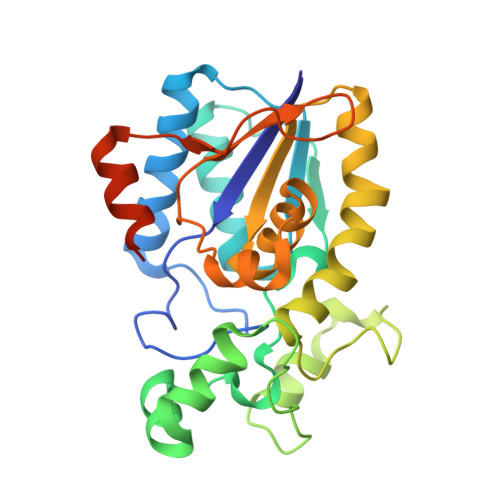Crystal structure of human B-type phosphoglycerate mutase bound with citrate.
Wang, Y., Wei, Z., Liu, L., Cheng, Z., Lin, Y., Ji, F., Gong, W.(2005) Biochem Biophys Res Commun 331: 1207-1215
- PubMed: 15883004
- DOI: https://doi.org/10.1016/j.bbrc.2005.03.243
- Primary Citation of Related Structures:
1YFK, 1YJX - PubMed Abstract:
The B-type cofactor-dependent phosphoglycerate mutase (dPGM-B) catalyzes the interconversion of 2-phosphoglycerate and 3-phosphoglycerate in glycolysis and gluconeogenesis pathways using 2,3-bisphosphoglycerate as the cofactor. The crystal structures of human dPGM-B bound with citrate were determined in two crystal forms. These structures reveal a dimerization mode conserved in both of dPGM and BPGM (bisphosphoglycerate mutase), based on which a dPGM/BPGM heterodimer structure is proposed. Structural comparison supports that the conformational changes of residues 13-21 and 98-117 determine PGM/BPGM activity differences. The citrate-binding mode suggests a substrate-binding model, consistent with the structure of Escherichia coli dPGM/vanadate complex. A chloride ion was found in the center of the dimer, providing explanation for the contribution of chloride ion to dPGM activities. Based on the structural information, the possible reasons for the deficient human dPGM mutations found in some patients are also discussed.
Organizational Affiliation:
National Laboratory of Biomacromolecules, Institute of Biophysics, Chinese Academy of Sciences, Beijing 100101, PR China.
















